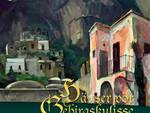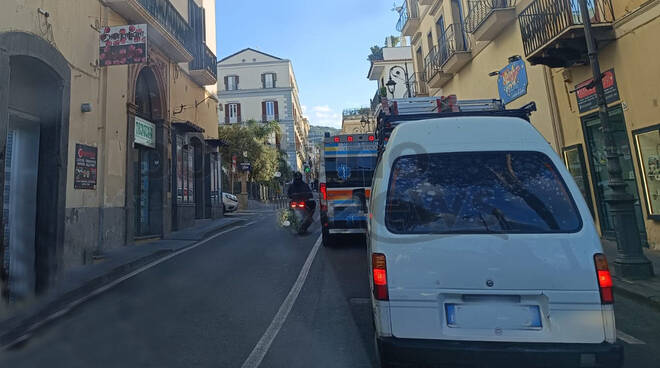Discovering Positano. “Verba volant, scripta manent”. VIDEO
Più informazioni su

Oggi, 16 marzo, Discovering tratta un aspetto della nostra storia poco considerato, ma su cui si dovrebbe fare maggiore chiarezza.
Lo spunto per scrivere questo articolo proviene da un discorso che pronunciò Caio Tito quasi 2000 anni fa di fronte al Senato Romano. In questo frangente Caio affermò, con un tono quasi lapidario, un’espressione che è diventata una locuzione latina famosissima: «Verba volant, scripta manent», ossia «Le parole volano, gli scritti rimangono». A quell’epoca questo senatore voleva elogiare la fonè, ossia la voce umana, la leggerezza e la mobilità di cui sono dotate le parole, a scapito della pesantezza e della fissità dello scritto, richiamando la profonda diffidenza che prima Socrate e poi Platone nutrirono nei confronti della scrittura.
La scrittura, però, nel corso del tempo si è rivelata utilissima, tanto utile al punto da sembrare indispensabile. Ed anche il significato di quell’espressione latina è mutato nei secoli. Per comprendere questo concetto, riporto qui un botta e risposta presente nei Promessi Sposi:
– Son venticinque berlinghe nuove, di quelle col sant’Ambrogio a cavallo, – disse Tonio, levandosi un involtino di tasca.
– Vediamo, – replicò don Abbondio: e, preso l’involtino, si rimesse gli occhiali, l’aprì, cavò le berlinghe, le contò, le voltò, le rivoltò, le trovò senza difetto.
– Ora, signor curato, mi darà la collana della mia Tecla.
– È giusto, – rispose don Abbondio; poi andò a un armadio, si levò una chiave di tasca, e, guardandosi intorno, come per tener lontani gli spettatori, aprì una parte di sportello, riempì l’apertura con la persona, mise dentro la testa, per guardare, e un braccio, per prender la collana; la prese, e, chiuso l’armadio, la consegnò a Tonio, dicendo: – va bene?
– Ora, – disse Tonio, – si contenti di mettere un po’ di nero sul bianco.
– Anche questa! – disse don Abbondio: – le sanno tutte. Ih! com’è divenuto sospettoso il mondo! Non vi fidate di me?
Detto questo, il mettere nero su bianco non è più un fatto di fiducia, ma è una vera e propria forma di responsabilità. Il difetto che i Greci, all’alba della scrittura avevano visto, l’immobilità e la fissità, è diventato un pregio per noi: le parole vengono dette, riferite, modificate e dimenticate. Gli scritti rimangono, possono essere copiati, stampati e ristampati, ed, oggi, grazie alla potenza di Internet, possono veramente viaggiare alla velocità del pensiero, volare più velocemente delle parole.
La storia di Positano, in tutto questo discorso, c’entra. Dopo le fonti latine su Posìdes, gli scripta che possediamo oggi su Positano e la Costiera Amalfitana ci rimandano solo a 300 anni dopo il crollo della villa romana, creando in tal modo un “buco storico”. Sembrerebbe essere l’unico anello mancante della storia di Positano, ma in realtà questo buco è colmabile, in quanto in mancanza degli scripta e dei verba (tradizione orale), ci viene incontro l’archeologia, una disciplina che si colloca a metà fra queste due sfere.
Dopo l’eruzione del Vesuvio e lo sfacelo creato nella parte più “sorrentina” della Costiera (proprio Positano), dove molto probabilmente non si tentò di ricostruire una nuova villa maritima, il nostro obiettivo si focalizza sulla villa di Minori, una fonte archeologica validissima. Essa costituisce una testimonianza molto importante perché, tramite degli studi accurati fatti al suo interno, sappiamo che rimase disabitata solo nel V secolo. Questo ci fa capire che la storia della Costiera Amalfitana non si interruppe ed il centro focale degli insediamenti romani era nei pressi del corso d’acqua Rheginna Minor. Fra poche settimane, si comprenderà anche il motivo per cui la villa fu abbandonata.
Nel prossimo articolo Discovering dalle rovine di una antica città greca, farà rinascere la memoria della “Nuova Roma”.
Il video “Le varie eruzioni del Vesuvio” è sul canale Youtube Positanonews tv.
Gennaro Cuccaro, Associazione Positano Arte e Cultura.
Today on March 9, Discovering talks about an aspect of our history not sufficiently considered, but over which it should shed more light.
The inspiration for this article comes from a speech pronounced by Caius Titus almost 2000 years ago in front of the Roman Senate. In this situation Caio said, with an almost lapidary tone , an expression that has become a famous Latin phrase: “Verba volant, scripta manent”, ie “Words fly, writings remain.” At that time this senator wanted to commend the fonè, namely the human voice, the lightness and mobility of which are equipped the words, to the detriment of the slowness and rigidity of the writing, recalling the deep mistrust that before Socrates and then Plato of towards writing.
The writing, however, over time has proved to be extremely useful, so useful to seem indispensable. And also the meaning of that Latin expression has changed over the centuries . To understand this concept, we report here a speech of the Betrothed:
– These are berlinghe new twenty – five berlinghe, of those with St. Ambrose on horseback – Tonio said , removing from his pocket a roulade.
– Let’s see, – Don Abbondio said: and, taking the roulade, sir priest remitted the glasses, opened it, took out berlinghe, counted, turned away, revolted them, he found them without defect.
– Now, sir priest, give me the necklace of my Tecla.
– That’s right, – Don Abbondio said; then he went to a cupboard, took off a key from his pocket, and, looking around, as for keeping away the spectators, he opened one side of the door, filled the opening with the person, poked his head in, to watch, and an arm to take the necklace; he took it, and closing the cupboard, handed it to Tonio, saying – okay?
– Now, – Tonio said, – sir priest put a little ‘of black on white.
– Also this! – Don Abbondio said: – they know all. Ih! how the world is become suspicious! Do not you trust me?
Saying this, to put black on white is no longer a matter of trust, but it is a real form of responsibility. The defect that the Greeks, at the dawn of writing they had seen, the immobility and the fixity, has become a virtue for us: the words are said, referred, modified and forgotten. The writings remain, may be copied, printed and reprinted, and, today, thanks to the power of the Internet, can really travel at the speed of thought, fly faster than words.
The history of Positano, in this discourse, got to do. After Latin sources about Posides, the scripta that we have today about Positano and the Amalfi Coast send us back only at 300 years after the collapse of the Roman villa, thus creating an ” historic hole “. It would seem to be the only missing link of the history of Positano, but in reality this hole can be filled, because in the absence of scripta and verba (oral tradition), we meet the archeology, a discipline that is an intermediate discipline between these two spheres.
After the eruption of Mount Vesuvius and the debacle created in Positano , where probably it didn’t try to rebuild a new villa maritima, our objective is focused on the villa of Minori, a very valuable archaeological source. It is a very important testimony because, through some careful studies done on the inside, we know that it remained uninhabited only in the fifth century. This makes us understand that the history of the Amalfi Coast is not stopped and the focus of Roman settlements was near the river Rheginna Minor. In a few weeks, we will understand also why the villa was abandoned.
In the next article Discovering from the ruins of an ancient Greek city, will revive the memory of the “New Rome”.
Video “Le varie eruzioni del Vesuvio” is on Youtube channel Positanonews tv.
Gennaro Cuccaro, Association Positano Arte e Cultura.








